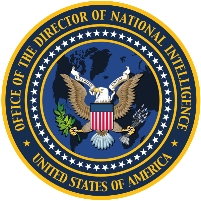8 Extremely Little-Known Corners of the U.S. Intelligence Network…and 4 More
Thursday, June 04, 2009

While the government spends billions to keep things secret, it also splurges a little on information that’s not so tightly locked away. The Office of the Director of National Intelligence, home to the country’s top spook, has published a handbook that highlights some top-secret elements in the American intelligence community. Even experts like Steven Aftergood, who directs the Federation of American Scientists’ Project on Government Secrecy, didn’t know about some of the stuff published in the 2009 National Intelligence: A Consumer’s Guide. These include:
HUMINT Operational Communications Network (HOCNet) which provides IT, communications and desktop services for the Defense Department’s HUMINT (Human Intelligence, or “spies”);
Capitol Network (CapNet) which allows intelligence specialists in Congress to access information from the intelligence community’s classified intranet (Intelink) and the CIA;
Contractor Wide Area Network (CWAN), the National Reconnaissance Office’s top-secret computer network for private contractors (NRO operates the country’s fleet of spy satellites);
The Compartmented Information Network of the National Geospatial Intelligence Agency, which processes information beamed down from NRO satellites;
NRO’s Management Information System (NMIS), the agency’s top secret network, sometimes called GWAN (Government Wide Area Network);
Stone Ghost, the Defense Intelligence Agency’s classified network that allows the U.S. to share information with counterparts in Australia, Canada, and the United Kingdom;
The National Operations and Intelligence Watch Officer Network (NOIWON), a dedicated secure telephone system that allows high-clearance officials in Washington, DC, to conduct conference calls;
And WashFax, a secure fax system intended for use within Washington, DC.
Among the other intelligence entities are:
The Underground Facilities Analysis Center (UFAC), which detects and analyses underground sites being used by foreign governments and terrorist groups;
The National Virtual Translation Center(NVTC), which uses government sources, private industry, academia and technology to provide quick and accurate translations;
In-Q-Tel, the CIA-operated venture capital firm that develops spy-related technology;
The National Defense Intelligence College (NDIC), operated by the Defense Intelligence Agency (DIA) and offering Bachelor and Master degrees in strategic intelligence.
-Noel Brinkerhoff
The Consumer's Guide to Intel Nets (by Bob Brewin, NextGov)
National Intelligence: A Consumer’s Guide (Office of the Director of National Intelligence) (PDF)
- Top Stories
- Unusual News
- Where is the Money Going?
- Controversies
- U.S. and the World
- Appointments and Resignations
- Latest News
- Can Biden Murder Trump and Get Away With it?
- Electoral Advice for the Democratic and Republican Parties
- U.S. Ambassador to Greece: Who is George Tsunis?
- Henry Kissinger: A Pre-Obituary
- U.S. Ambassador to Belize: Who is Michelle Kwan?






Comments